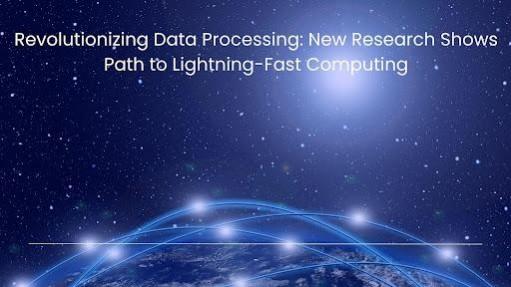
In a groundbreaking research paper, Sai Manish Podduturi, a technology expert based in the USA, presents comprehensive findings on real-time data processing in modern distributed systems. His work offers crucial insights into how organizations can handle massive data streams while maintaining peak performance.
The Digital Tsunami
Global data creation is expected to surge past 180 zettabytes by 2025, revolutionizing how organizations handle information. This explosive growth has driven innovations in AI and connectivity technologies, particularly in 5G and IoT networks. As a result, real-time data processing has become essential for modern operations, enabling businesses to make split-second decisions and respond instantly to changing conditions.
Speed Demons of Financial Technology
High-frequency trading systems have achieved remarkable speeds, now processing up to 200 million orders per second with latency under 100 microseconds. This technological leap has delivered impressive results, boosting transaction efficiency by 65% while cutting operational costs by 43%. These improvements demonstrate how real-time processing can transform financial operations.
Healthcare's Digital Revolution
The healthcare sector has witnessed remarkable evolution in real-time processing capabilities. Contemporary systems manage an average of 665 terabytes of data per hospital annually, with 27% requiring instantaneous processing for critical care decisions. Integration of distributed ledger technologies and advanced AI algorithms has reduced critical response times by 42% and improved diagnostic accuracy by 38%.
The E-commerce Evolution
Digital retail platforms have transformed through the adoption of trust architectures and real-time processing systems. Major platforms now handle an average of 115,000 transactions per second during peak periods, utilizing advanced computing paradigms that combine edge computing with centralized processing capabilities. Real-time recommendation engines have achieved a 35% improvement in conversion rates through instantaneous data-driven decision-making.
Smart Cities and IoT Innovation
The Internet of Things landscape presents compelling evidence for advanced real-time processing capabilities. Connected devices generate approximately 847 zettabytes of data annually, with smart city implementations processing 62.5 million data points per square kilometer daily. This massive data influx has spurred innovations in distributed computing architectures, with next-generation systems showing remarkable improvements in processing efficiency.
Breaking Performance Barriers
Recent implementations demonstrate unprecedented capabilities in handling distributed data. Systems can now process up to 5 million events per second through parallel processing patterns and advanced windowing techniques. These architectures maintain end-to-end processing latencies under 25 milliseconds while handling concurrent processing of multiple data streams.
The Future of Computing
The evolution of serverless computing has introduced sophisticated approaches to state management and function composition. Modern platforms achieve throughput rates of up to 3,000 function invocations per second per region while maintaining consistent execution latencies. These systems can handle complex function workflows with up to 100 steps while maintaining end-to-end execution times under 1 second.
Monitoring and Security Evolution
Advanced monitoring systems have evolved to incorporate sophisticated observability patterns across distributed architectures. Systems tracking key metrics achieve 99.7% accuracy in anomaly detection while maintaining monitoring overhead below 2% of system resources. These implementations ensure robust security and performance monitoring without compromising system efficiency.
The Road Ahead
As organizations embrace these technologies, the focus shifts to maintaining data consistency, optimizing performance, and ensuring system reliability. The integration of cloud-native technologies and serverless computing has enhanced these capabilities, providing flexible and cost-effective solutions for varying workload demands.
In conclusion, as highlighted in Sai Manish Podduturi's research, the comprehensive approach to system design and implementation represents a significant advancement in distributed computing, setting the stage for future innovations in real-time data processing architectures. These developments mark a new era in how organizations process and utilize data in real-time, promising even more revolutionary advances in the years to come.










